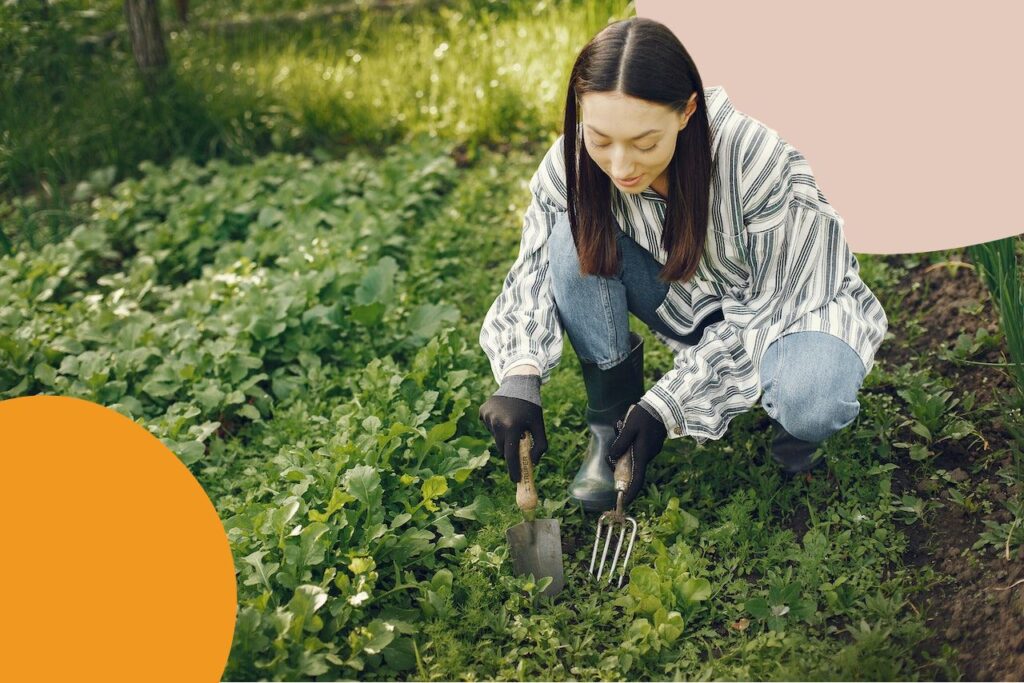Sometimes, as you stand undressed and exposed in an absolute storm of alarming headlines about the climate catastrophe, you do start to feel rather helpless.
We’ve probably all heard by now that 70% of greenhouse gas emissions in the past two decades can be attributed to 100 fossil fuel producers. We definitely all know that governments and legislators should be doing so much more to address the, you know, impending end of the world.
Yet, we all still feel a certain pang of guilt about that lid off the Dijon mustard jar that we may have incorrectly recycled last week.
Instead of feeling hopeless, helpless or angry, sometimes it’s better to focus on areas of your behaviour and your home that you can control. And the most logical place to start? Our gardens, of course.
One of the easiest ways that people can help the environment and reduce pollution on an individual level is by turning their gardens green, or rather, greener.
Whatever the size of your garden, it has the potential to help nature, becoming a more hospitable place for wildlife, a safe space for plants to thrive, and, if nothing else, an enjoyable place to escape.
With that in mind, here are 5 tips for creating a more nature-friendly garden.
Plant More Plants
Ugly header aside, it’s no secret that carbon dioxide loving plants and trees help to reduce pollution, and this can be the case, even in your garden (every little helps, hey?). No wonder trees and plants are often referred to as ‘the earth’s lungs’.
Indeed, the more greenery you have in your garden, the better things generally are for local wildlife. All that green stuff and foliage can be a source of food and shelter to all types of animals, helping to conserve and protect them.
So, give nature a helping hand; pot and plant as many flowers, shrubs and trees as your garden can take. Moreover, if you’re a fan of wild gardens, then embrace it; the wilder, the better we say.
When it comes to choosing plants, opt for native species as they will usually thrive much better than foreign ones. Also try to grow longer-life, perennial plants like daisies and hydrangeas which, according to research, can better help in the fight against climate change. From what we deduce, this is because they have longer roots, enabling longer-term carbon storage in the plants and the soil. They also help contain floods. What’s not to love?
Of course, you’ll want to make sure that, in inviting wildlife into your garden via trees, plants, and shrubbery, you’re not endangering any pets you’ve already got in the family. Make sure there’s no poisonous plants like ivy, daffodils, gladiola, tulips and azaleas out there, all of which can be toxic to both dogs and cats, and in cases of having particularly inquisitive pets, consider installing a dog or cat proof garden, to keep yours safe.
Read: How to ensure your garden is safe for your new puppy

Make A Compost Bin
Don’t let your leftovers rot in a landfill site, instead create your own compost in your garden. Actively composting your waste is one of the most eco-friendly things you can do, helping to reduces landfill waste and therefore incineration, and subsequently carbon emissions.
What’s more, composting is good for the land and encourages biodiversity as the space becomes a home for creepy crawlies and, as such, the rest of the food chain.
Compost heaps makes for great fertiliser as well, and it can do wonders for your lawn. And remember it’s not just fruit and veg waste you can put in your compost; nearly all of your food waste can be used to create compost as well as egg shells, egg boxes and even cardboard boxes, too.
Grow Your Own Fruit & Veg
When we think about the thousands of miles that the fruit and veg sold in our supermarkets has travelled, it makes us shudder and leaves a bad taste in our mouths – and that’s not just because it’s overripe by the time it reaches us.
Did you know that, according to a government report on food security released last year, just 16% of fruit in the British fruit bowl is grown here, with only 54% of vegetables on the British plate produced on these shores. Furthermore, while 1% of food is transported by air, it accounts for 11% of carbon emissions.
Unfortunately ,the fruit and veg we consume is a major contributor to greenhouse emissions and climate change and, as this article by the Guardian points out, it also means a heavy dependance on oil; a depleting resource that’s also highly politically charged.
If you don’t want to think about the damage that you’re doing to the environment every time you bite into an apple (only one in three apples we eat comes from the UK) consider growing your own produce in the garden.
Not only is this good for the environment, but you can also enjoy the fruits (ahem) of your labour… Freshly picked produce from the garden, there really is nothing better. It will also save you some pennies in the long run, too, but, most importantly, will nurture a sense of responsibility for nature, appreciation for producers the world over, and a deeper understanding of the seasons.
Add A Pond
Did you know that during the past century, nearly 50% of ponds were lost in the UK in the last century? This is bad news as ponds can make a large impact on environmental issues like climate change, flooding, pollution and water conservation.
Furthermore, they are a hotspot for biodiversity and support all types of wildlife, from damselflies and dragonflies to thirsty hedgehogs and foxes. What better excuse to introduce one back into your garden?
Consider A Bog Garden
If you’re planning on adding a pond to your garden, consider a bog garden, too. Building a bog garden around your pond not only acts as an extended habitat for wildlife, but it also allows you to grow more food.
Indeed, lots of edible plants thrive in the wet conditions of a bog garden, especially arrowheads (also known as duck potatoes), which, when boiled, taste like a nutty potato; delicious when roasted.
Water spinach, more commonly known as morning glory, also loves to grow in wet conditions as does watercress and water chestnut – all the vegetation beginning with water, then. With your own vegetable patch alongside an edible bog garden, you’ll be a little closer to self-sufficiency and, dare we say, feeling slightly smug. And who could blame you?





